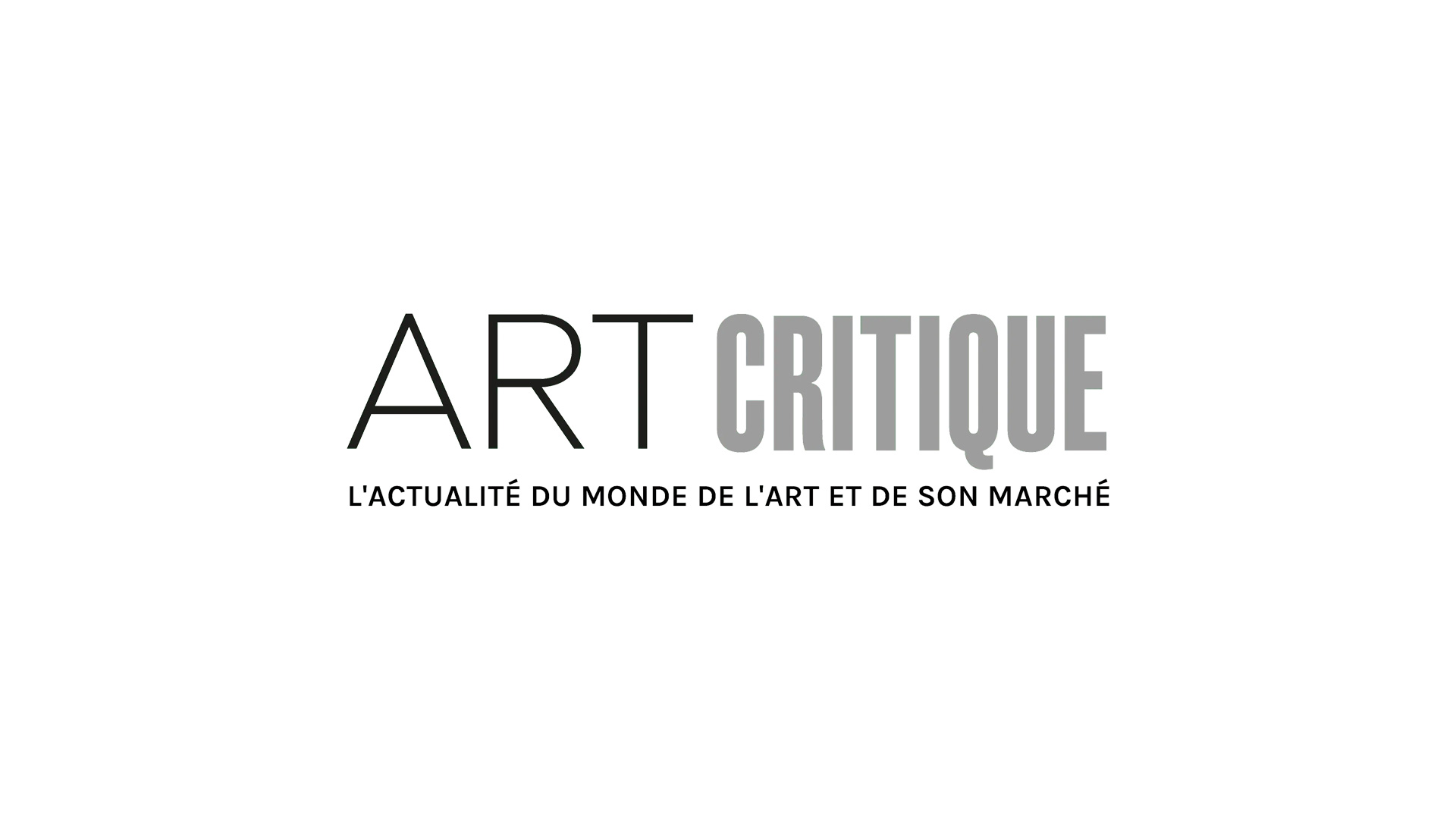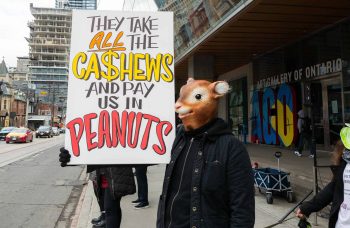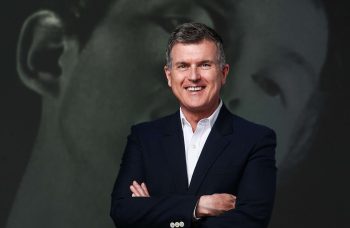A group of Pennsylvania art institutions, including the Philadelphia Museum of Art, are struggling to contain a scandal which might have lingering ramifications for the global art world.
The drama escalated last month, when the New York Times shared the claims of multiple women, who reported that Joshua Helmer, the 31-year-old former manager at the Philadelphia Museum of Art who went on to be the director of the Erie Art Museum (making him one of the youngest museum chiefs in the US), had interacted with them in a way that made them uncomfortable. During his time at the longstanding Philadelphia institution, Helmer allegedly made advances to younger women in subordinate positions at the museum, inviting them for drinks and implying that their professional success was directly tied to how willing they were to ‘get to know him’.
A museum spokesperson later said that they couldn’t discuss Helmer’s exit due to a confidentiality clause, while Helmer himself declined to comment to the New York Times on the employee allegations it had reported, stating that he always followed museum policy. An all-staff meeting convened at the museum to address concerns about Helmer’s tenure only served to further inflame tensions, while a counsellor hired by the museum to help staff members work through their concerns had to be replaced after a single day on the job for undisclosed reasons.
The Erie Art Museum in Pennsylvania fired Helmer after the original New York Times piece came out, as further harassment allegations emerged. It’s not been made clear whether or not senior staff at the Erie museum were aware of the allegations that had been levelled against Helmer when it hired him; the museum in upstate Pennsylvania has underlined that “no issues were identified during our due diligence”.
Regardless, it appears that further incidents occurred after Helmer’s move from Philadelphia to Erie. The Erie museum admitted that it investigated a complaint by a female college student who received text messages from Helmer, asking her to come to his home. The intern claims that Helmer retaliated against her after she rejected his offer, but the museum’s board of directors determined that no disciplinary action was required. In a statement, then board president Stephen Porter said that the matter was “dealt with in accordance with museum policies and procedures”.
The ripples of discontent are spreading
While the Philadelphia Museum carries out a— perhaps overdue—‘cultural assessment’, it remains to be seen what the wider implications of the scandal will be. For one thing, museum staff across the world have begun sharing their experiences of similar types of harassment on social media, adopting the hashtag #MuseumMeToo.
A common thread runs throughout the debate which is starting to take hold: that complaints against powerful men are either downplayed or swept under the carpet, while art world employees remain fearful of retaliation for whistleblowing. As current and former Philadelphia Museum of Art staff underlined, “this is not an isolated incident unique to one institution but endemic in the field. Structural change is required to ensure that abusers aren’t enabled, employees feel safe reporting abuse, and no one fears retaliation for coming forward”.
It’s a pattern that’s familiar to another group of workers who filed complaints against the museum’s former retail director, James Cincotta, alleging that he’d physically and verbally abused them. Cincotta was hired as the museum’s retail director in 2015 (on a salary of $161,000) in a bid to boost gift shop business. A year later, the museum launched an investigation after employees reported a pattern of slaps, punches and verbal tirades against them.
Tellingly, and in the face of apparently overwhelming evidence, Cincotta managed to hold on to his job for a further two years. Many of those who complained about Cincotta’s behaviour have expressed their belief that their accusations weren’t pursued because museum bosses were pleased with his work. Three claim they lost their jobs shortly after reporting him.
Even after Cincotta left the museum, he returned regularly for meetings and events in his new role as a board member for museum membership support group Collab – much to the amazement of ex-colleagues who contacted HR with their concerns after spotting him in the building. Even when Cincotta was later barred from entering the museum, the decision wasn’t announced to staff.
A similar story has emerged in respect of the museum’s handling of Helmer. Multiple employees are on record as having reported their concerns about Helmer’s conduct with women to managers or the HR department during his tenure at the museum – concerns which seemingly weren’t actioned at the time. Others have said they were worried about speaking out because of the perception that Helmer was close to the CEO and only felt they could share their experiences after Helmer had moved on.
Time for change?
Hundreds of museum staffers have signed a statement standing in solidarity with Helmer’s accusers, calling for urgent and systemic change. Many members of the museum’s workforce now come to work each day wearing “We Believe Women” buttons.
Philadelphia Museum CEO Timothy Rub has moved to defuse criticism by calling for a complete overhaul of HR policy: ’We will be engaging outside consultants to conduct a close review of our workplace environment, our policies and programs, including training activities so we understand how we can be better in the future’. The institution is also moving to create an anonymous hotline for reporting such concerns as were allegedly swept under the rug in the cases of Helmer and Cincotta.
But, will the headline-making cases in Pennsylvania be enough to spark the beginning of a broader examination of sexual harassment and other inappropriate behaviour in the cultural sector? After all, it’s not the first time that museums have been dragged into thorny sexual harassment or assault scandals.
The reputation of Pittsburgh’s Mattress Factory, for example, took a major hit in 2018 after it apparently failed to thoroughly investigate allegations that five female employees were sexually abused by a male co-worker.
While the Mattress Factory is renowned for its progressive stance, it’s primarily staffed by low-paid, part-time workers who don’t have a lot of say in how things are run – like other institutions of this size, it operates largely on the goodwill and commitment of interns and volunteers. Yet, despite allegations relating to serious crimes including rape and sexual assault, the male employee at the heart of the investigation appears to have been given the benefit of the doubt on multiple occasions. He was required only to undertake ‘workplace harassment training’ – and retained his job. The alleged victims spoke out against the museum’s handling of the case, again claiming that neither their fears nor their safety were taken seriously enough.
The Mattress Factory has taken steps to move past the allegations, including hiring its first full-time HR manager. It has nevertheless suffered its share of scars from the scandal—from an exodus of staff to legal settlements.
An international issue
It’s not just museums in the US that are under fire for failing to handle harassment cases robustly. While cultural heritage institutions in other countries may be differently funded and structured, the imbalances of power that spark accusations of harassment and abuse are found across the sector. A survey on bullying recently conducted by the Museums Association (MA) returned more than 500 responses, with preliminary data showing that much of the bullying in this cultural sector is related to sex.
In Ireland, the National Museum suspended a staff member after an intern accused him of sexual harassment, only to be faced with a lawsuit from the accused employee for not following proper procedures. Although an internal investigation found that the archaeology intern had been the subject of repeated harassment, the staff member, Dr Halpin, was only handed a reprimand and temporary suspension, on full pay. The museum has since reached a settlement with Halpin who no longer works for the organisation.
A Delhi court order, meanwhile, called for anonymous allegations against artist and curator Subodh Gupta to be scrubbed from Facebook and Instagram – a decision which dozens of art workers condemned as ‘an attempt to dissuade others from sharing further experiences of harassment and violence, and to perpetuate a culture of fear’.
At the end of 2018, the anonymous Insta page alleged that Gupta, a renowned figure in the art world, had indulged in unwanted touching and inappropriate sexual advances towards a number of women at Delhi’s Serendipity Arts Festival. Artists and arts workers condemned the court’s ruling, labelling Gupta’s lawsuit as a bid to ‘silence the survivors’. Recently, lawyers for the activists agreed to withdraw the posts in return for retaining the anonymity of the account and for Gupta dropping his demands for damages.
Meanwhile, London’s Tate Gallery and the National Galleries of Scotland suspended relations with prominent donor Anthony d’Offay after allegations of sexual harassment emerged against the influential art dealer, only to resume contact with him a year later despite artists’ and curators’ strenuous objections. The two institutions share an ‘Artist Rooms’ touring programme, curated by d’Offay and featuring many works from his own collection which takes contemporary art to dozens of UK museums and galleries.
Last year, an open letter, endorsed by representatives of the arts community, urged the Tate to begin a full internal investigation into the allegations and its own conduct. The allegations of sexual harassment and inappropriate behaviour date back to 1997 and are strenuously denied by d’Offay, though it’s unclear why his accusers – who are successful professionals in their own right – would fabricate their stories. In each instance the women tell of d’Offay’s arrogance and ascribe their reluctance to make the allegations public to the dealer’s position as ‘one of the most powerful men in the art world’.
Speaking out against abuse
As the trial of #MeToo movement lynchpin Harvey Weinstein is entering its final act with his sentencing on Wednesday morning, people are becoming more aware of workplace harassment – and more willing to speak out not only against abusers but also the organisations and structures that enable abuse to be perpetrated.
In the notoriously secretive art world, workers’ rights in general are increasingly coming under scrutiny. Staff at high-profile institutions such as New York’s Guggenheim and the Frye Art Museum in Seattle are joining unions as issues like pay disparity, lack of diversity and the rise of contract work become more prominent. With these public cases surely representing just the tip of the iceberg of problematic behaviour in the art world, will the twin Philadelphia Art Museum cases succeed in sparking a global #MuseumMeToo movement?
If you work in the art world and have felt that your concerns over inappropriate behaviour have not been taken seriously, Art Critique would be interested in discussing with you (happy to talk on background or anonymously). You can reach us at contact@art-critique.com or DM on Twitter (@artcritique_en).





